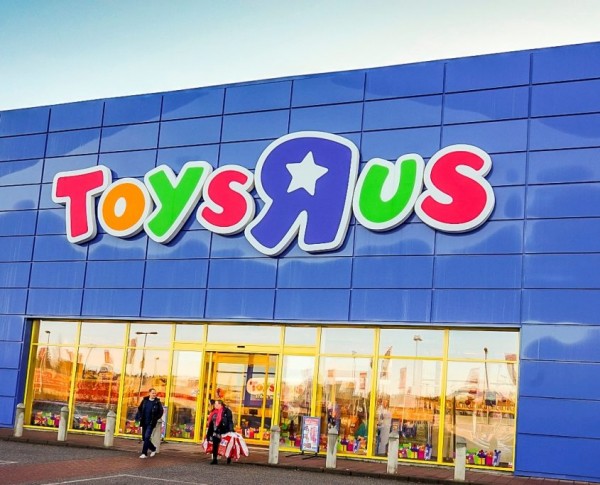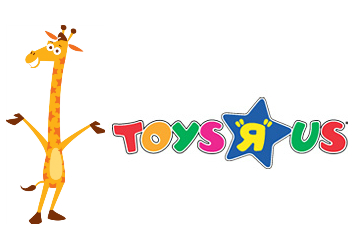Unless you are a CRA member, living under a rock, voted for Hillary, or have any Park Family Genes in your DNA, you have likely heard Toys R Us is liquidating their business here in the United States and all over the globe. What caused a giant big box that controlled 20% of the toy market to collapse you may ask? Well a combination of things, but the internet, Amazon.com and high prices were none of them.
First some background on Toys R Us. The company was founded in 1948 by Charles Lazarus who interestingly died the same day the company decided to liquidate all stores. The company had sustained success and was even referred to as a “category killer” which is similar to how people view Amazon.com today (a company that is almost impossible to compete with).
Editor’s note: As a child, the highlight of every Christmas was receiving the Sear’s Christmas catalog. In my youth this was Christmas. We only wanted to get toys from Sears because it was literally a one-stop shop for everything. From their catalog, our parents could order anything and have it waiting for us under the tree. Seemingly out on nowhere, along came Toys R Us and stole Christmas from the oldest and most well-known retailer in the country.

The company prospered for many decades but in the late 1990’s Toys R Us started having issues competing with Target, Wal-Mart, and Amazon.com. In 1998 it fell behind Wal-Mart in market share. This is when the chain’s issues started. They tried Kids R Us, a clothing discount chain, and it failed badly and was liquidated after 5 short years. They began growing their Babies R Us chain, to essentially focus on commodities like diapers and bottles, this was also a bad decision. Even more costly was the expensive remodeling of all stores in 2000 by former FAO Schwartz CEO John Eyler. This predictably didn’t change the competitive landscape so in 2005 with the stock struggling on Wall Street, it was sold in a leveraged buyout to 3 private equity firms. This further exasperated the problems facing Toys R Us. The buyout to take Toys private was 6.6 billion dollars, led by Bain Capital (After Mitt Romney had left) Vornado Realty Trust, and Kohlberg Kravis & Roberts.
Leveraged buyouts are not always bad things, there are benefits to being private and you do not have to answer to public investors on Wall Street and can work out corporate and company issues behind closed doors. In N Out and Chick-fil-A are both private and the lines are out the door, down the street, and in most cases backed up to the freeway! Michael Dell—yes that Dell—took the company he founded, Dell Computer, private. Dell Computer had been struggling for many years but taking it private has allowed it to turn around. Typically, after these types of buyouts, private equity firms wind up taking the company public again (more on this later).
So how do these buyouts work? When a public company has a major drop in stock price and has fundamental issues like Toys did, then in come the White Knights saying they can fix everything and will offer to buy the shares of the entire company. In the case of Toys, the private equity guys offered a price 67% higher than what the shares were trading for on Wall Street; banks are happy, stockholders are typically happy, everyone gets paid and then the company is private. In the case of Toys, it was 6.6 billion. So, did the private equity guys have to pay 6.6 billion for Toys? No, they borrowed the money from investment banks—think Goldman Sachs, Morgan Stanley, etc.—and used the company’s cash flow as collateral. Truth be told, the private equity guys in this case likely put up only about 10% of that 6.6 billion.
So, from the start, Toys had a debt load of 6 billion to pay back, at interest rates likely in the 8-9% range! Banks extract large fees from these loans and add it to the debt load—think the housing crisis circa 2008. The banks just rolled the expenses into the loan then sold it to an unsuspecting group of investors. In this case Toys was now controlled by 3 large companies that didn’t know how to run the toy business at all. However, one thing these 3 companies know a lot about is how to extract money from their investment, (more on this later as well).
So after the dust settled, Toys was saddled with 400 million in annual interest payments to satisfy the terms of their loan. Think about that, 400 million in annual revenue goes first to paying off debt interest, not keeping the lights on or paying salary, just debt. Then the private equity companies charge a “management fee” of usually 2-3% of revenue every year, further straining cash flow to pay bills. Then they pay themselves a dividend every year of around 5-8% on their “investment” once again straining cash flow even further.
With sales falling, Toys began to run low on cash. As a result, cuts had to happen across the company because no way would the private equity companies take a cut in fees. In such circumstances, the research and development department gets cuts first, then other sales, general and administrative expenses are slashed next, followed by a hiring freeze, then changes to the accounts payable department. What used to be 30 or 45 day terms are changed to 60 or 90 day terms. After that benefits are cut/eliminated and salaries for new hires are slashed to minimum wage. This is all being done to pay interest and dividends to private equity companies.
The result of this ultimately led to the death of the company. Because of financial constraints, Toys can’t innovate much. For example, toys are only made by a couple different companies—Hasbro and Mattel being the big ones—so in a sense you are limited by their innovation in that space. On price, Toys only had about 800 stores in the United States compared to Wal-Mart and Target which have 800 in the western U.S. alone. This hurt the negotiation power Toys had with suppliers. For example, Toys wants to buy one million GI Joe toys from Hasbro, and Hasbro sells them to Toys for $10 a unit. Wal-Mart orders three million GI Joe toys and Hasbro cuts them a volume discount based on $7 a unit. As a result Toys sold GI Joe for $14 and Wal-Mart could sell for $10. Toys then agreed to price match the competition, so now on that same GI Joe instead of making $4 per unit, they were breaking even; such a business model is not sustainable.
Also, there was no money being re-invested back into the business. Toys used to be known as a huge demonstration and interactive place for children to visit, try out the toys, and then scream and cry until mom or dad bought it for them. Those demo areas disappeared. Toys became a big box store and worse yet couldn’t compete on price with other big box stores like Wal-Mart. In a world where price is now everything, Toys had an advantage at one time. The child could play with and decide they want the product and unfortunately for the parents, they couldn’t wait two days for Amazon Prime because little Mike wanted it NOW.
Even as the business declined, Toys still controlled 20% of the market. Finally, the private equity guys turned to turnaround artist David Brandon, you may recognize the name, he turned Domino’s Pizza into the company it is today and brought it back from the dead. The problem for Toys was that it was too late. Toys remodeled several hundred stores, brought back the demo areas, improved their website, but the damage from private equity had been done. The flow of money away from operations led to customers opting for other big box stores or internet websites. They couldn’t attract top talent anymore and began to close stores several tranches at a time.
This spooked suppliers and as a result; Hasbro, LEGO, and Mattel changed the terms under which they would sell products to Toys. The result, Toys ran out of inventory during the Christmas shopping season! With unsustainable debt, the company could not pay its bills and as a result the only option left was bankruptcy protection. A big store like Toys—similar to Sports Authority and Sport Chalet—no way the creditors would allow them to go through a restructure, they would need to liquidate. Thus, the end of Toys R Us. But don’t feel bad for the private equity groups. They collected fees and dividends for over 15 years and then during bankruptcy sold the inventory and everything else to liquidation firms. Additionally the lack of profitability also gives tax advantages to these groups since they tend to own many companies. The employees? They got nothing, except a pink slip of course.
Could Toys have been saved…I think so; there is room for a toy store chain in the United States. This is what I would have done. I would have run the stores similarly to Best Buy or a grocery store. I would have found a tenant or two to sublease floor space, so they could demo their own products. I would have set up an area to host children’s birthday parties, and maybe reached out to LEGO to see if they wanted to create a LEGO Land in the stores. This would give predictable cash flow every month and given you a way to spruce up your business to make it more appealing to customers. Have you been to a Best Buy lately? I don’t even think Best Buy owns much of its own leased stores; Pacific Sales, Sprint, T-Mobile, Magnolia, Google, and HP/Apple lease a ton of floor space from them. As far as price match goes, that’s a battle big box stores win by attrition. I would have focused on making the stores into a place both parent and child want to go to because I don’t think anyone admits publicly to wanting to go to Wal-Mart. But alas, a large part of most people’s childhood is gone with the wind.
“X”
